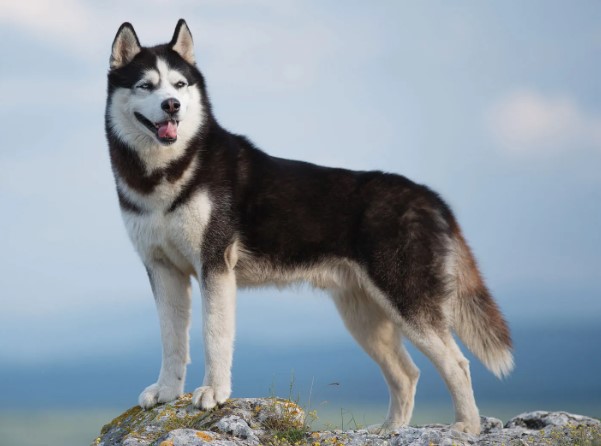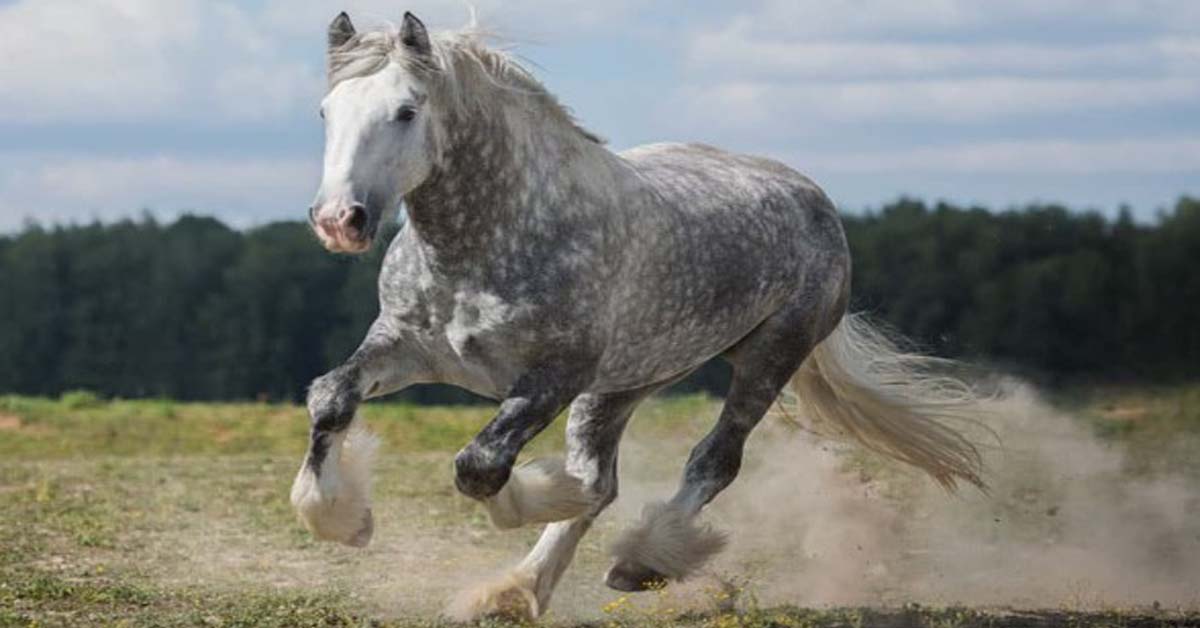The origins of the Bullmastiff Dog date back to 19th-century England, where it was selectively bred to safeguard expansive estates and protect the game from poachers. Despite its fearless and confident nature, the bullmastiff is characterized by a sweet and gentle temperament, making it an ideal family companion.
As natural guardians, bullmastiffs exhibit minimal barking tendencies and have modest requirements for exercise and grooming. Despite their size, these dogs adapt well to apartment living, proving equally comfortable in both apartment and house settings.
Bullmastiff – Vital Stats:
Dog Breed Group: Working Dogs
Height: 24 to 27 inches at the shoulder
Weight: 100 to 130 pounds
Life Span: 8 to 10 year
Colors: Brindle, Fawn, Red
Hypoallergenic: No
FCI Number: 157
History Of Bullmastiff Dog
The Bullmastiffs Dog’s origins are shrouded in uncertainty. During the eighteenth century in certain parts of England, a deliberate crossbreeding of the Old English Mastiff and the English Bulldog was common. This practice aimed to produce dogs well-suited for guarding both individuals and their property. By the early twentieth century, the breed had gained widespread recognition for its role in assisting game wardens in controlling poaching activities.
Gamekeepers selectively bred these dogs, emphasizing strength, size, and speed. The breeding involved crossing the robust, hefty, and assertive bulldog of the nineteenth century with the larger, sturdier, and less aggressive mastiff. Consequently, the bullmastiff earned the moniker of the gamekeeper’s night dog.
The Kennel Club officially recognized the Bullmastiff as a distinct breed in 1924. To qualify for registration, dogs had to demonstrate a lineage traceable to Bullmastiff stock for at least four generations without any infusion of Bulldog or Mastiff blood. Crossbred animals were ineligible for registration.
The American Kennel Club granted recognition in 1934, and the breed received definitive acknowledgment from the Federation Cynologique Internationale in 1955.
Notably, in 1928, the diamond mining company De Beers imported bullmastiffs into South Africa with the specific purpose of guarding the mines.
Breed Characteristics
| Friendliness: 3 Points | Exercise Needs: 2 Points | Health Issues: 4 Points |
| Barking Tendencies: 3 Points | Grooming Needs: 2 Points | Shedding Level: 2 Points |
| Training Needs: 4 Points | Good With Kids: 3 Points | Good With Cats: 2 Points |
| Good As A Service Dog: 1 Point | Good For Apartments: 2 Points | Biting Tendencies: 3 Points |
| Energy Level: 3 Points | Good With Other Dogs: 2 Points | Playfulness: 2 Points |
| Sensitive to Cold Weather: 2 Points | Sensitive to Warm Weather: 3 Points | Good Pet Parents: 2 Points |
Bullmastiffs Dog Appearance
Regal and robust, the Bullmastiff Dog presents itself as a striking canine. With a commanding posture, its large head is held high, exuding focus. Supported by sturdy, broad legs, the dog boasts a deep chest, wide shoulders, and a gently sloping back.
Inheriting a square, muscular physique from its Mastiff ancestry, the Bullmastiff’s body sways gracefully, especially when its tapered tail whips energetically. Evidence of its bulldog lineage is apparent in the wrinkles adorning its forehead and the folds on its short black muzzle, creating an expression that, despite appearances, leans more towards charm than sorrow. Adopting a classic “bully” style, its jowls are slightly furrowed, and its round, deep-set brown eyes carry a touch of wistfulness.
The Bullmastiff’s coat, sleek, dense, and short, typically comes in fawn or red hues, accented by black markings around the eyes and on its V-shaped ears that point gracefully down the sides of its head.
In terms of size, males typically weigh between 110-130 pounds, while females range from 100-120 pounds. Meeting you at hip height or even higher, the crown of its head comfortably fits under your palm. Standing at 27 inches at the withers, this large working dog breed embodies both elegance and strength.

Temperament of Bullmastiffs Dog
Affectionate and cheerful, Bullmastiffs Dog forge profound connections with their human counterparts, embodying unwavering loyalty. A blend of the Old English Mastiff and the bold Bulldog, the Bullmastiff encapsulates the ideal amalgamation of their qualities, emerging as an affectionate guardian.
Despite their innate guarding instincts, these gentle giants are not inclined to excessive barking. Bred to detect, track, and subdue predators silently, they are akin to the ninjas of the canine world.
Their presence often goes unnoticed until you feel a gentle lean against your leg or find them attempting to nestle into your lap. Leave them alone, and they’ll patiently wait by the back door, eager to rejoin your company. Endearing personalities contribute to their ranking as the 51st most popular dog in America.
While Bullmastiffs are not inherently aggressive or prone to biting, they exude confidence as protective guardians. Like many working breeds, they may exhibit wariness toward strangers. Early training for Bullmastiff puppies is essential to acclimate them to visitors in your home.
Given their substantial size and occasional misconception of their own dimensions, Bullmastiffs can display a degree of clumsiness around small children, cats, and tiny dogs. Vigilance is advised when your Bullmastiff shares space with those smaller than themselves.
Bullmastiffs Dog Personality
Bullmastiff Dogs exhibits a gentle and affectionate demeanor within the family circle. Their generally tranquil and easy-going nature makes them well-suited for families with reasonably well-behaved children. However, the Bullmastiff’s calm disposition can undergo a shift in the presence of strangers, as these dogs tend to be wary of individuals outside the family unit.
Despite their family-oriented loyalty, Bullmastiffs possess an independent streak, posing a challenge in training. This breed may showcase less tolerance towards animal members of the family compared to their human counterparts. Exercise caution if contemplating the addition of a Bullmastiff to your household menagerie.
Health
A UK survey, examining the lifespan of 96 Bullmastiff Dog, revealed an average age of 7.5 years. The breed is prone to various health concerns, encompassing hip and elbow dysplasia, progressive retinal atrophy, bloat, and cancer. Notably, there are relatively elevated incidences of lymphoma and mast cell tumors.
Bullmastiffs are particularly susceptible to several hereditary diseases, including:
- Hip dysplasia, affecting 24.5% of individuals
- Elbow dysplasia, observed in 13.8% of individuals
- Entropion and hypothyroidism, impact 2.8% of individuals
- Lymphoma
- Progressive retinal atrophy poses a specific challenge, given its autosomal dominant trait. However, recent findings question this, suggesting that some Bullmastiffs carry the autosomal recessive PRA gene. Ongoing investigations in the United States, conducted by the American Bullmastiff Health and Research Committee, are exploring this aspect, and it is noted that the DNA Optigen test currently focuses solely on dominant genes, which is considered insufficient at this time.
Best Care Tips For Bullmastiff
The Bullmastiff Dog, characterized by its low-energy disposition, is highly adaptable to various home environments. However, due to its size, it thrives best in a residence with a fenced yard.
Fences not only serve to protect Bullmastiffs from potential hazards like roaming and traffic but also establish boundaries that prevent them from expanding their territory beyond their home and yards. Without proper containment, they may exhibit protective behaviors, attempting to ward off unfamiliar people and dogs from entering their designated space.
Given their short muzzles, Bullmastiffs Dog are more susceptible to heat-related issues, including exhaustion and heatstroke. To mitigate these risks, it is advisable to avoid strenuous exercise during the peak heat of the day and provide indoor shelter during hot or humid weather. Ensuring they always have access to shade and fresh water outdoors is crucial for their well-being.
Initiate training for your Bullmastiff puppy promptly upon bringing them home, capitalizing on their more manageable size. Participation in puppy socialization classes is highly recommended to acclimate them to diverse environments with other dogs and people. This is especially vital for Bullmastiffs, as they may exhibit aggression towards unfamiliar individuals if not properly socialized and taught good manners.
Puppy
In addition to enrolling your Bullmastiff in puppy kindergarten and standard obedience classes, expose them to various environments such as parks and outdoor shopping malls. This allows them to familiarize themselves with new people, experiences, sights, and sounds.
While Bullmastiffs have a desire to please, they also possess independent thinking and require a confident trainer. Utilize positive reinforcement techniques, steering clear of corporal punishment, while maintaining firm and consistent expectations. Vary your training routines to prevent boredom, as Bullmastiffs may otherwise engage in their own activities.
Consider the long-term implications of your training decisions. If you wish to deter your Bullmastiff from furniture access when they reach 130 pounds, instill this restriction early on when they weigh only 20 pounds. Habits established early can be challenging to break.
Establishing a positive housetraining experience involves maintaining a regular potty schedule and providing ample opportunities for outdoor breaks. Crate training proves to be a valuable tool for housetraining and prevents undesirable chewing behavior in young puppies.
Effective training for Bullmastiffs necessitates a firm approach, balanced with love and patience. Once trained, these dogs transform into wonderful, caring, and fiercely loyal companions, willing to go to great lengths to protect their human family.

Grooming
Bullmastiff dogs may not shed as extensively as Border Collies, but due to their larger size, managing their coat requires attention. To minimize shedding effects, use a bristle brush, grooming glove, or rubber brush, aiming to brush your pup once a week. During the spring and fall, when shedding is more pronounced due to weather changes, increase brushing frequency to several times a week, possibly even daily.
While brushing, take the opportunity to clean your Bullmastiff’s ears regularly to prevent allergies, ear mites, and infections. Employ cotton balls or ear wipes for this task; avoid using Q-tips. If uncertain about ear cleaning or if you observe redness or an unusual odor, consult your veterinarian.
Bathing your Bullmastiff need not be frequent; once a month or every two to three months may suffice unless your dog gets exceptionally dirty. Excessive bathing can strip the natural oils vital for maintaining healthy skin and coat. For touch-ups, use waterless shampoo or grooming wipes for the face and a cotton ball dipped in warm water or a washcloth for the area around the eyes.
An essential grooming habit is teeth brushing, crucial for your pup’s well-being and for preventing expensive veterinary bills. Begin getting your Bullmastiff accustomed to teeth brushing from a young age, starting a few times a week and progressing to a daily routine. Schedule an annual professional teeth cleaning with your veterinarian to ensure optimal dental health for your pet.
Training For Bullmastiff
Large breeds such as Bullmastiff Dogs demand experienced and committed pet owners willing to invest time in socialization and training. These robust canines, while powerful and well-built, may not always gauge their strength, posing a risk if untrained and exuberant around visitors.
Initiate training for your Bullmastiff when they are puppies to mold them into well-behaved family members. Their innate intelligence and quick learning ability make them adept at grasping basic commands (such as sit, stay, and come) and tricks.
Given their strength, it’s crucial to teach your puppy early on not to leash or jump on people during training sessions to avert potential accidents as they mature.
The “Place” command proves valuable in detaching your Bullmastiff from guests entering the home. To instill this command, entice your puppy to the designated spot by holding a treat, uttering “place,” and rewarding them when they sit in the specified area. Gradually increase the distance from the spot, allowing your pup to associate the command with staying in place. Starting with the “sit” command may enhance the effectiveness of this training.
Consistency is key in training Bullmastiffs, and new pet owners may benefit from group training classes or hiring a trainer using positive reinforcement for personalized instruction.
Diet & Nutrition
Ensure your Bullmastiff Dog maintains optimal health by providing a high-quality, well-balanced diet. Look for pet food that carries a disclosure indicating compliance with the standards set by the Association of American Feed Control Officials.
Adhere to the recommended feeding guidelines provided on the packaging of a reputable dog food brand to prevent overfeeding. Consulting your veterinarian is essential to receive guidance on your Bullmastiff’s diet, overall health, lifestyle considerations, and the appropriate feeding frequency.
For growing puppies, particularly those requiring specific nutrition for their developing musculoskeletal system, consider incorporating puppy food specially formulated for large breeds. Trusted brands catering to large breed puppies include Hill’s, Purina, and Royal Canin.
When planning meal times, be mindful of your dog’s caloric intake, maintaining a balance between regular food and treats to keep your Bullmastiff at an optimal weight. Always follow your veterinarian’s recommendations, as they are best equipped to advise on meal plans that meet your pup’s unique nutritional requirements.
Breed Organization
Explore the following breed clubs, organizations, and associations for additional information on the Bullmastiff Dog:
Bullmastiff – Top 10 Facts
Other Dog Breeds and Further Research
Bullmastiff FAQs
How much is a Bullmastiff dog?
If you are in the market for a Bullmastiff Dog, expect to pay between $1,000 – $2,000 for a puppy, with an average price of around $1,500. However, it is not uncommon for purebred Bullmastiff puppies from high-quality parents to fetch around $3,000.
Is Bullmastiff hypoallergenic?
No, Bullmastiff is not hypoallergenic. Although they have short coats, Bullmastiffs drool moderately and often, which can trigger allergies.
Is the bullmastiff aggressive or dangerous?
No, Bullmastiffs are not aggressive or dangerous. Their sheer size can be intimidating to strangers, but these gentle giants can be well-behaved pets with proper training and socialization.
Does a bullmastiff shake?
Yes, bullmastiffs drool, so you’ll want to designate a towel that’s specifically for them. Bullmastiffs slip because their lips are loose (but they’ll take your secrets to the grave).
Are Bullmastiffs Good Guard Dogs?
Bullmastiffs make good guard dogs, but remember, they are ninjas, not barkers. They have a strong instinct to protect the family they love.
What are the most popular bullmastiff names?
Popular Bullmastiff names include Bear, Champion, Braveheart, King, Knight, Gallant, Spirit, Clifford, Bruiser, Goliath, Maximus, Jupiter, and Rocky.
What is the most common bullmastiff mix?
The most common Bullmastiff mixes are:
- Bullmastiff-Pit Mix (Pitbull Mastiff)
- Bullmastiff-Great Dane Mix (Bull Denis)
- Bullmastiff-Boxer Mix (Boxmas)
- Bullmastiff-German Shepherd Mix (German Shaders)
- Bullmastiff-Rottweiler Mix (Bull Mastweiler)












4 thoughts on “Bullmastiff Dog- 1 Of The Best Information About You’re Dog…”